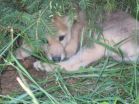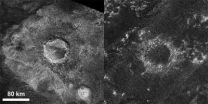(Press-News.org) WASHINGTON— The rapid decline in costs associated with many common laboratory techniques, such as DNA sequencing and synthesis, has led to their adoption by individuals outside of traditional university or industrial settings, giving rise to a rapidly growing Do-It-Yourself Biology (DIYbio) community.
DIYbio.org and the Synthetic Biology Project at the Woodrow Wilson Center this week are launching the "Ask a Biosafety Expert" service in order to provide this emerging DIYbio community with free and timely access to professional biosafety advice. The project comes amidst growing interest in and concerns about the DIYbio community.
In recent years, the DIYbio movement has created new venues for the general public to learn, access and engage in biotechnology, with DIYbio groups and community laboratories forming in dozens of cities around the world. The movement attracts amateurs, entrepreneurs, citizen scientists, educators, hackers and the intellectually curious to participate in hands-on workshops, group projects and self-directed research activities.
"The long-term success of the movement to make biotechnology more accessible will require a strong safety ethos, responsible practice and expert guidance and support resources," said Jason Bobe, co-founder of DIYbio.org.
The aim of the "Ask a Biosafety Expert" service is to provide advice from experts about laboratory safety, disposal and other bio-related issues to members of the DIYbio community. Questions submitted anonymously to the DIYbio.org website will be sent to a panel of professional biosafety experts for prompt and user-friendly feedback. The responses will be posted and archived on the public website providing a growing resource for DIYbio enthusiasts.
Questions can be asked and answers will be posted at: http://ask.diybio.org/
###
About DIYbio.org
DIYbio.org was founded in 2008 with the mission of establishing a vibrant, productive and safe community of do-it-yourself biologists. Central to the group's mission is the belief biotechnology and greater public understanding about it has the potential to benefit everyone. For more information, visit: http://www.diybio.org
About the Synthetic Biology Project
The Synthetic Biology Project is an initiative of the Woodrow Wilson International Center for Scholars supported by a grant from the Alfred P. Sloan Foundation. The Project aims to foster informed public and policy discourse concerning the advancement of synthetic biology. For more information, visit: http://www.synbioproject.org
About The Wilson Center
The Wilson Center provides a strictly nonpartisan space for the worlds of policymaking and scholarship to interact. By conducting relevant and timely research and promoting dialogue from all perspectives, it works to address the critical current and emerging challenges confronting the United States and the world. For more information, visit: http://www.wilsoncenter.org
Questions about biosafety? Ask a biosafety expert
New website launched to help DIY biologists
2013-01-18
ELSE PRESS RELEASES FROM THIS DATE:
Why wolves are forever wild, but dogs can be tamed
2013-01-18
AMHERST, Mass. – Dogs and wolves are genetically so similar, it's been difficult for biologists to understand why wolves remain fiercely wild, while dogs can gladly become "man's best friend." Now, doctoral research by evolutionary biologist Kathryn Lord at the University of Massachusetts Amherst suggests the different behaviors are related to the animals' earliest sensory experiences and the critical period of socialization. Details appear in the current issue of Ethology.
Until now, little was known about sensory development in wolf pups, and assumptions were usually ...
Health and law expert: NFL not alone in handling concussions as 'benign' problems
2013-01-18
INDIANAPOLIS -- More than 2,000 former football players are suing the National Football League, saying the league should have taken action earlier to deal with injuries related to concussions more seriously.
But if a lack of speed in tackling concussions warrants criticism, the NFL isn't the only player deserving a penalty, according to a study co-authored by health care and law expert David Orentlicher, who teaches at Indiana University Robert H. McKinney School of Law in Indianapolis.
Neurologists were also slow in sounding the alarm, and for decades, concussions ...
New study challenges links between day care and behavioral issues
2013-01-18
CHESTNUT HILL, MA (Jan. 17, 2013) – A new study that looked at more than 75,000 children in day care in Norway found little evidence that the amount of time a child spends in child care leads to an increase in behavioral problems, according to researchers from the United States and Norway.
Several prior studies in the U.S. made connections between the time a child spends in day care and behavioral problems, but the results from Norway contradict those earlier findings, the researchers report in the online version of the journal Child Development.
"In Norway, we do not ...
Study findings have potential to prevent,reverse disabilities in children born prematurely
2013-01-18
PORTLAND, Ore. – Physician-scientists at Oregon Health & Science University Doernbecher Children's Hospital are challenging the way pediatric neurologists think about brain injury in the pre-term infant. In a study published online in the Jan. 16 issue of Science Translational Medicine, the OHSU Doernbecher researchers report for the first time that low blood and oxygen flow to the developing brain does not, as previously thought, cause an irreversible loss of brain cells, but rather disrupts the cells' ability to fully mature. This discovery opens up new avenues for potential ...
Want to ace that interview? Make sure your strongest competition is interviewed on a different day
2013-01-18
Whether an applicant receives a high or low score may have more to do with who else was interviewed that day than the overall strength of the applicant pool, according to new research published in Psychological Science, a journal of the Association for Psychological Science.
Drawing on previous research on the gambler fallacy, Uri Simonsohn of The Wharton School of the University of Pennsylvania and Francesca Gino of Harvard Business School hypothesized that admissions interviewers would have a difficult time seeing the forest for the trees. Instead of evaluating applicants ...
In minutes a day, low-income families can improve their kids' health
2013-01-18
URBANA – When low-income families devote three to four extra minutes to regular family mealtimes, their children's ability to achieve and maintain a normal weight improves measurably, according to a new University of Illinois study.
"Children whose families engaged with each other over a 20-minute meal four times a week weighed significantly less than kids who left the table after 15 to 17 minutes. Over time, those extra minutes per meal add up and become really powerful," said Barbara H. Fiese, director of the U of I's Family Resiliency Program.
Childhood obesity ...
Understanding personality for decision-making, longevity, and mental health
2013-01-18
January 17, 2013 – New Orleans – Extraversion does not just explain differences between how people act at social events. How extraverted you are may influence how the brain makes choices – specifically whether you choose an immediate or delayed reward, according to a new study. The work is part of a growing body of research on the vital role of understanding personality in society.
"Understanding how people differ from each other and how that affects various outcomes is something that we all do on an intuitive basis, but personality psychology attempts to bring scientific ...
World's most complex 2-D laser beamsteering array demonstrated
2013-01-18
Most people are familiar with the concept of RADAR. Radio frequency (RF) waves travel through the atmosphere, reflect off of a target, and return to the RADAR system to be processed. The amount of time it takes to return correlates to the object's distance. In recent decades, this technology has been revolutionized by electronically scanned (phased) arrays (ESAs), which transmit the RF waves in a particular direction without mechanical movement. Each emitter varies its phase and amplitude to form a RADAR beam in a particular direction through constructive and destructive ...
NASA beams Mona Lisa to Lunar Reconnaissance Orbiter at the moon
2013-01-18
VIDEO:
NASA Goddard scientists transmitted an image of the Mona Lisa from Earth to the Lunar Reconnaissance Orbiter at the moon by piggybacking on laser pulses that routinely track the spacecraft.
HD...
Click here for more information.
As part of the first demonstration of laser communication with a satellite at the moon, scientists with NASA's Lunar Reconnaissance Orbiter (LRO) beamed an image of the Mona Lisa to the spacecraft from Earth.
The iconic image traveled ...
Titan gets a dune 'makeover'
2013-01-18
Titan's siblings must be jealous. While most of Saturn's moons display their ancient faces pockmarked by thousands of craters, Titan – Saturn's largest moon – may look much younger than it really is because its craters are getting erased. Dunes of exotic, hydrocarbon sand are slowly but steadily filling in its craters, according to new research using observations from NASA's Cassini spacecraft.
"Most of the Saturnian satellites – Titan's siblings – have thousands and thousands of craters on their surface. So far on Titan, of the 50 percent of the surface that we've seen ...
LAST 30 PRESS RELEASES:
New expert guidance urges caution before surgery for patients with treatment-resistant constipation
Solar hydrogen can now be produced efficiently without the scarce metal platinum
Sleeping in on weekends may help boost teens’ mental health
Study: Teens use cellphones for an hour a day at school
After more than two years of war, Palestinian children are hungry, denied education and “like the living dead”
The untold story of life with Prader-Willi syndrome - according to the siblings who live it
How the parasite that ‘gave up sex’ found more hosts – and why its victory won’t last
When is it time to jump? The boiling frog problem of AI use in physics education
Twitter data reveals partisan divide in understanding why pollen season's getting worse
AI is quick but risky for updating old software
Revolutionizing biosecurity: new multi-omics framework to transform invasive species management
From ancient herb to modern medicine: new review unveils the multi-targeted healing potential of Borago officinalis
Building a global scientific community: Biological Diversity Journal announces dual recruitment of Editorial Board and Youth Editorial Board members
Microbes that break down antibiotics help protect ecosystems under drug pollution
Smart biochar that remembers pollutants offers a new way to clean water and recycle biomass
Rice genes matter more than domestication in shaping plant microbiomes
Ticking time bomb: Some farmers report as many as 70 tick encounters over a 6-month period
Turning garden and crop waste into plastics
Scientists discover ‘platypus galaxies’ in the early universe
Seeing thyroid cancer in a new light: when AI meets label-free imaging in the operating room
Neutrophil-to-lymphocyte ratio may aid risk stratification in depressive disorder
2026 Seismological Society of America Annual Meeting
AI-powered ECG analysis offers promising path for early detection of chronic obstructive pulmonary disease, says Mount Sinai researchers
GIMM uncovers flaws in lab-grown heart cells and paves the way for improved treatments
Cracking the evolutionary code of sleep
Medications could help the aging brain cope with surgery, memory impairment
Back pain linked to worse sleep years later in men over 65, according to study
CDC urges ‘shared decision-making’ on some childhood vaccines; many unclear about what that means
New research finds that an ‘equal treatment’ approach to economic opportunity advertising can backfire
Researchers create shape-shifting, self-navigating microparticles
[Press-News.org] Questions about biosafety? Ask a biosafety expertNew website launched to help DIY biologists




